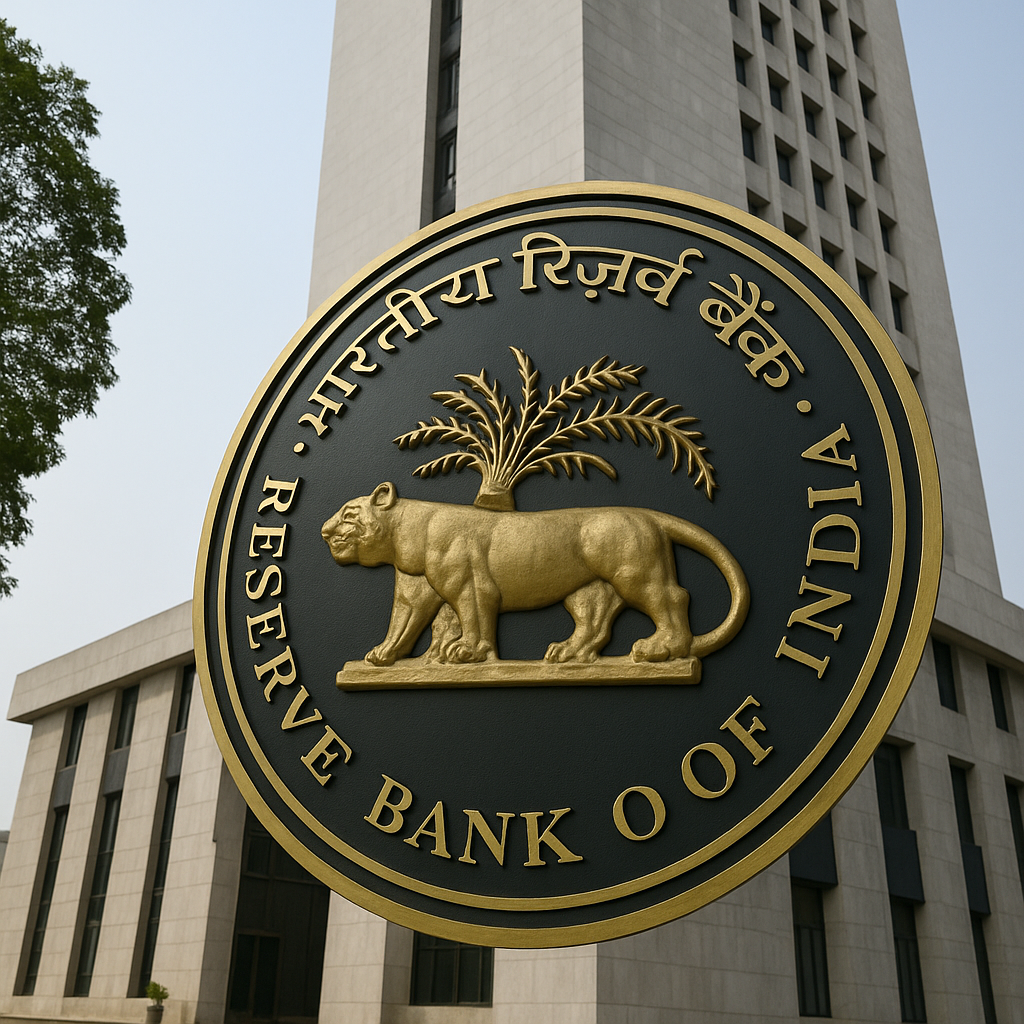RBI ₹1 Trillion Reverse Repo Auction Triggers Bold Liquidity Shift Amid Surging Surplus
1. 😲 RBI ₹1 Trillion Reverse Repo Auction Sparks Market Alert
RBI ₹1 Trillion Reverse Repo Auction has rocked India’s money market this week. On July 3, 2025, the Reserve Bank of India stunned analysts by announcing a ₹1 trillion, 7-day variable-rate reverse repo auction for July 4, aiming to soak up a record ₹3.75 trillion liquidity surplus—the highest in over three years.
Investors and traders immediately sensed the urgency: this wasn’t just a routine operation—it was a bold strike to stabilize overnight borrowing rates and defend the policy corridor.
2. 💥 Why This ₹1 Trillion Move Matters
Surging liquidity has significant consequences:
-
Drags down overnight call money rates below policy thresholds
-
Distorts the interest rate corridor, with call rates dipping toward the lower bound
-
Pressures banks to park funds with RBI at the SDF rate instead of lending to the market
By rolling out the RBI ₹1 Trillion Reverse Repo Auction, the central bank signals determination to keep financial plumbing healthy.
3. 📊 Liquidity Hits Record ₹3.75 Trillion—A Major Red Flag
As of July 2, surplus liquidity hit ₹3.75 trillion, up dramatically from around ₹1.5 trillion only a few weeks prior. These levels haven’t been seen since mid-2022 when pandemic-era liquidity distorted markets globally.
Unchecked, such excess can:
-
Cripple money market signals
-
Weaken the media transmission of policy rates
-
Exacerbate currency depreciation via inflationary pressure
Hence, this bold RBI ₹1 Trillion Reverse Repo Auction isn’t just prudent—it’s essential.
4. 🔄 Tactical Pivot: From 14‑Day OMO to 7‑Day Repo
Previously, the RBI planned a 14-day Open Market Operation (OMO) around June 27 to absorb liquidity. However, the central bank scrapped that plan unexpectedly.
Instead, they shifted strategy:
-
✅ 7‑day reverse repo auction (₹1 trillion)
-
🔄 More nimble, fine-tuned intervention
-
🎯 Allows precision control over overnight rates
Market veterans say this shift shows RBI’s agility and sophistication in managing excess liquidity.
5. 🏦 How It Stabilizes the Rate Corridor
India’s policy corridor is anchored by:
-
Repo Rate: 5.50%
-
Standing Deposit Facility (SDF): 5.25% (25 bps below repo)
With surplus, market call rates plunged below 5.25%, threatening financial risk signals. The ₹1 Trillion Reverse Repo Auction sucks out liquidity, nudging rates toward 5.30–5.40%, keeping them within the corridor’s comfort zone.
6. 📈 Market Reaction: Money and Bond Markets Respond
Early trading suggests:
-
✅ Call Money Rates edged up toward corridor midpoint
-
✅ G-Sec Yields showed controlled stability—little disruption
-
🧑💼 Traders applauded the move as “timely and surgical”
Bond desk leads told us the RBI appears intent on steadying the ship, not throttling growth.
7. 🌐 RBI vs Global Peers: Why It’s Smart and Strategic
Unlike the Fed or ECB, India lacks large-scale balance sheet tools. This ₹1 Trillion Reverse Repo Auction is local, effective, and inexpensive:
-
No public borrowing involved
-
Minimal inflationary impact
-
Public confidence intact
Analysts note this shows RBI’s growing sophistication in SME-style central banking.
8. 📋 Who’s Affected and How
| Stakeholder | Effect |
|---|---|
| 💼 Banks | Will lock in excess funds via reverse repo instead of lending |
| 🔒 Borrowers | May see steady or slightly elevated short-term lending rates |
| 📈 Bond Investors | Stability in yields may reduce portfolio volatility |
| 🇮🇳 Forex Markets | Averted liquidity-fueled currency weakness |
| 🏦 Call Market | Restored robust day-to-day rate metric clarity |
9. 🚨 Key Risks to Monitor
-
📌 Persistent surpluses (>₹4 trillion) may force repeat auctions
-
📌 Elevated liquidity could still pressure Rupee and inflation
-
📌 Global shocks (oil spike, Fed pivots) could amplify market stress
If the surplus grows again, the RBI may go back to the policy toolkit—perhaps via OMOs or policy repo adjustments.
10. 🔍 Market Insights & Anecdotes
In Mumbai’s bond pits, one trade desk reportedly guffawed,
“We thought the cash went to casinos—turns out it was hiding under bankers’ pillows!”
Other strategists praised the move as a “textbook central bank intervention,” capable of pre-empting hazards without causing alarm.
11. 🎯 What’s Next? Timeline to Watch
-
July 8–10 – Evaluate call rate trends post-auction
-
Mid-July – RBI MPC minutes release—may signal future liquidity stance
-
Late Q3 – Potential repeat operations or OMO resurgence depending on surplus trends
12. 💡 Takeaway for You
-
Bond investors: Watch yield curves—short-end rates may tick up slightly
-
Borrowers: Expect stable short-term borrowing costs, little change
-
Forex traders: Rupee defense via liquidity control is satisfactory
-
Policy watchers: RBI demonstrates growing finesse in liquidity management
13. 🔚 Final Word
The RBI ₹1 Trillion Reverse Repo Auction stands out as a masterclass in precise central banking—deliberate, bold, and reassuring. It keeps liquidity spikes from destabilizing markets, without shifting the growth or inflation regime.
This move confirms what analysts have been saying: RBI isn’t just reactive—it’s strategic in ensuring India’s financial architecture remains firm and future-ready.
Source: Reuters
Suggestion: Rupee Falls After Trump Tariff Warning: 4 Critical Signals for Indian Economy

2 Comments